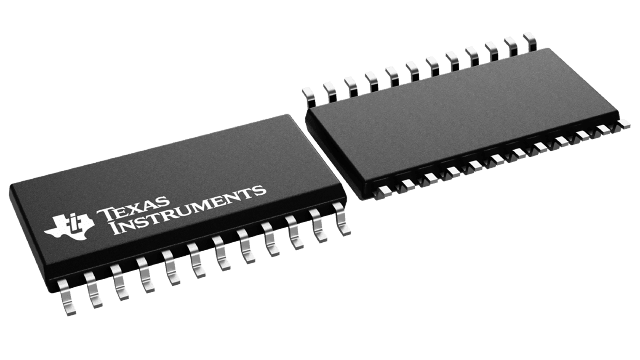Información de empaque
| Encapsulado | Pines SOIC (DW) | 24 |
| Rango de temperatura de funcionamiento (℃) -40 to 125 |
| Cant. de paquetes | Empresa de transporte 2,000 | LARGE T&R |
Características para TPIC2603
- Serial Control With Diagnostics
- Six Power DMOS Transistor Outputs of 350-mA Continuous Current
- Internal 60-V Inductive Load Clamp
- Independent ON-State Shorted-Load/Short-to-Battery Fault Detection on All Drain Terminals
- Independent OFF-State Open-Load Fault Sense on All Drain Terminals
- Transition of Drain Outputs to Low Duty Cycle Pulsed-Width-Modulation (PWM) Mode for Over-Current Condition
- Over-Battery-Voltage-Lockout Protection
- Over-Temperature Sense With Serial Interface Fault Status
- Fault Diagnostics Returned Through Serial Output Terminal
- Internal Power-On Reset of Registers
- CMOS Compatible Inputs With Hysteresis
Descripción de TPIC2603
The TPIC2603 is a monolithic low-side driver which provides serial interface and diagnostics to control six on-board power DMOS switches. Each channel has independent OFF-state open-load sense, ON-state shorted-load/short-to-battery protection, over-battery-voltage-lockout protection, and over-temperature sense with fault status reported through the serial interface. The device also provides inductive voltage transient protection for each drain output. The TPIC2603 drives inductive and resistive loads such as relays, valves, and lamps.
Serial data input (SDI) is transferred through the serial register when CS\ is low on low-to-high transitions of the serial clock (SCLK). Each string of data must consist of 8 or 16 bits of data. A logic high input data bit turns the respective output channel ON and a logic low data bit turns it OFF. CS\ must be transited high after all of the serial data has been clocked into the device. A low-to-high transition of CS\ transfers the last six bits of serial data to the output buffer, places the serial data out (SDO) terminal in a high-impedance state, and re-enables the fault register. Fault data for the device is sent out the SDO terminal. The first bit of the shift register is exclusively ORed with the fault registers. When a fault exists, the SDI data is inverted as it is transferred out of SDO. Fault data consists of fault flags for over-temperature (bit 6) and shorted/open-load (bits 0-5) for each of the six output channels. Fault register bits are set or cleared asynchronously, when CS\ is high to reflect the current state of the hardware. The fault must be present when CS\ is transited from high to low to be captured and reported in the serial fault data. New faults cannot be captured in the serial register when CS\ is low.
When an over-current or shorted-load fault occurs, the channel transits into a low duty cycle pulse-width-modulated (PWM) signal as long as the fault is present. More detail on fault detection operation is presented in the device operation section of this data sheet.
The TPIC2603 provides pulldown resistors on all active-high inputs except SCLK. A pullup resistor is used on CS\.
The TPIC2603 is characterized for operation over the operating case temperature of -40°C to 125°C.
